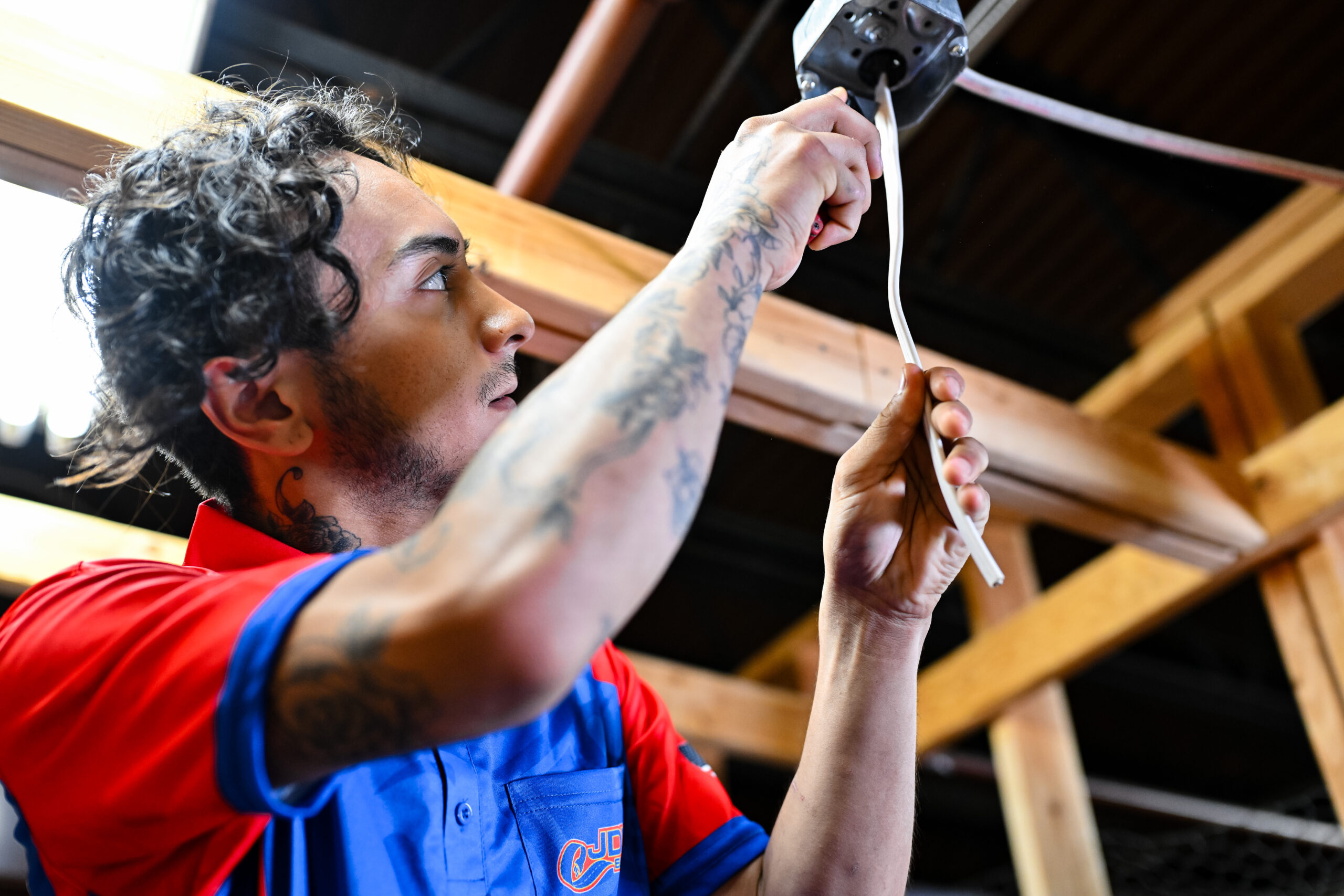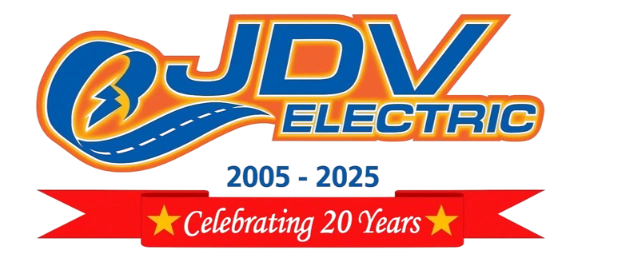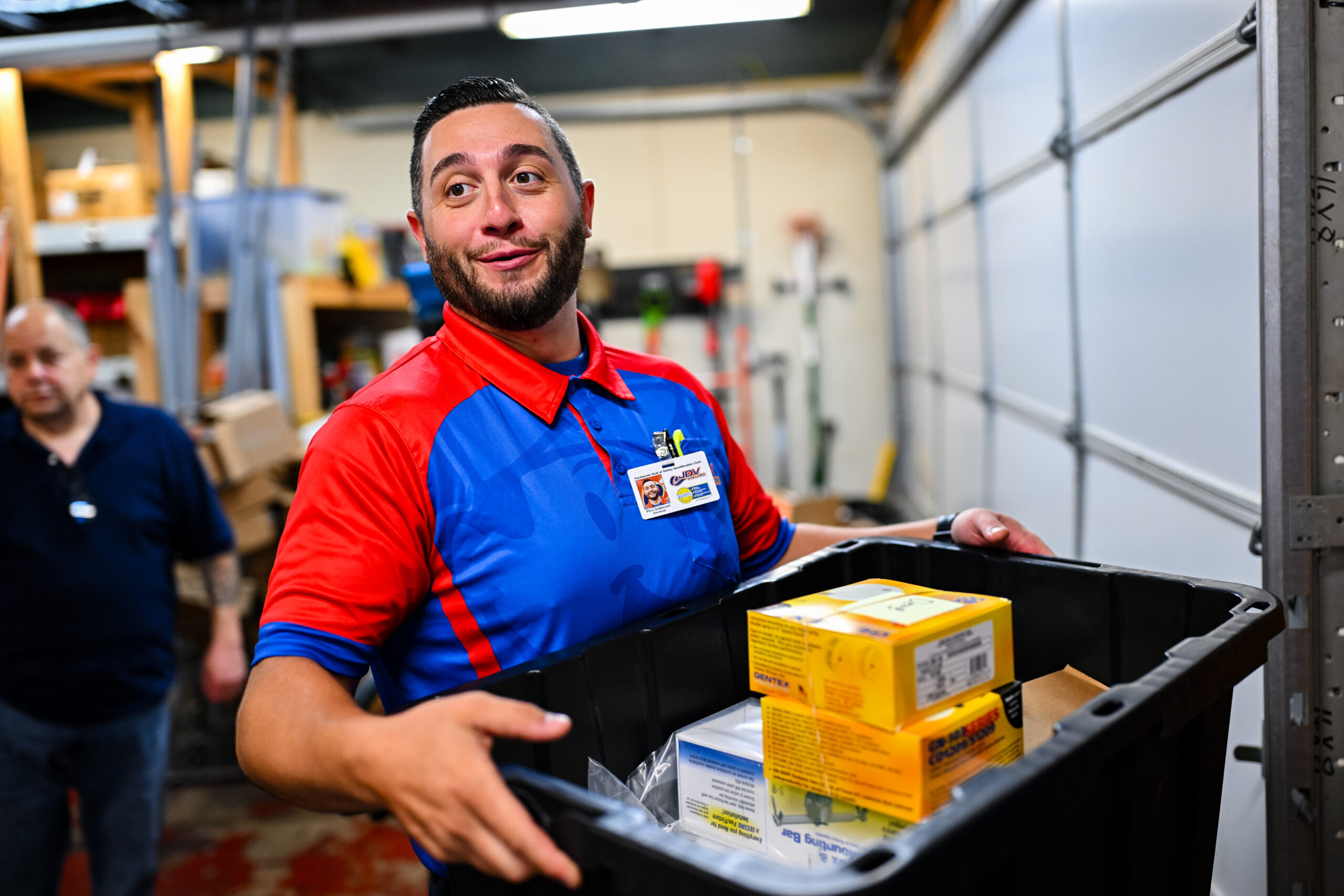Understanding Power Outages After a Storm
Electrical, Home & Electrical Safety, Lighting
Power outages are common after a storm, but it’s frustrating when only part of your house is affected. You may wonder how half the power can go out while the other half is fine. The causes can vary, from damage to the electrical system to issues with your circuit breaker. Sometimes, it’s just a matter of how the storm’s impact affects different parts of your home’s electrical grid. For help with identifying the cause and restoring your home’s power, our Delaware County electricians can assist in diagnosing and fixing the problem.
Why Does Power Only Go Out in Part of My House?
Common Causes of Partial Power Loss
A partial power loss can happen for several reasons. One of the most common causes is damage to the power lines outside your home. Storms, fallen trees, or high winds can knock down power lines, causing power loss in certain areas. Another reason is a problem in the electrical panel, like a faulty breaker or fuse. The circuit that powers part of your home may be cut off, leaving some rooms with no electricity. Old or damaged wiring can also create partial outages. In some cases, problems with your utility company’s power grid can affect only specific areas of your home.
How Circuit Breakers Can Cause Partial Outages
Circuit breakers are designed to protect your home from electrical overloads. If a circuit is overloaded or shorted, the breaker will trip, cutting off power to that area. This can cause only part of your home to lose power. A breaker may trip for many reasons, such as using too many appliances at once or a fault in the wiring. Sometimes, the breaker itself might be damaged or faulty, causing it to trip unnecessarily. It’s important to check the breakers and reset them when power is lost. If the problem persists, the breaker might need to be replaced.
What Happens Inside Your Electrical Panel During a Storm?
How Electrical Panels Respond to Storms
During a storm, your electrical panel acts as the control center for your home’s power. When a storm causes a power surge or an electrical fault, the panel is designed to shut off power to certain circuits to protect your home. Lightning strikes or power line damage can create surges that may overload the system. If the panel detects a surge, it will trip a breaker, cutting off power to prevent a fire or electrical damage. In some cases, the surge might not trip the breaker, but it could still cause long-term damage to the wiring or appliances connected to it.
Identifying Faults in Your Panel
If your electrical panel has issues, it’s important to recognize the signs early. One common fault is a tripped breaker. This happens when the breaker senses an overload or short circuit and cuts power to prevent further damage. If a breaker keeps tripping, it might be a sign of a deeper problem, such as faulty wiring or a damaged breaker. Burn marks on the panel or a burning smell are serious signs of damage. In these cases, don’t attempt to fix the problem yourself. Call a professional to inspect and repair the panel safely.
Can Lightning Cause Partial Power Loss?
Direct Hits vs. Nearby Strikes
When lightning hits a power line directly, it can cause a major power outage. A direct strike can cause an immediate surge of electricity, damaging the electrical system. However, lightning can also cause problems without directly hitting your home. Nearby strikes, or “indirect” hits, send out electrical energy that can affect the power lines and your electrical system. This can lead to power fluctuations, tripped breakers, or even partial power loss. The damage from a nearby strike can sometimes be less obvious, but it can still cause issues with your wiring and appliances.
How Lightning Damages Electrical Systems
Lightning can cause a lot of damage to electrical systems in your home. The high voltage from a lightning strike can overload circuits, causing breakers to trip or fuses to blow. This sudden surge of power can also damage sensitive equipment like computers, TVs, and refrigerators. The wiring in your home may also be affected, causing short circuits or even fires. If a surge protector isn’t installed, appliances and devices are more vulnerable. After a lightning storm, it’s important to check your electrical system for any signs of damage to prevent further problems.
How Can You Fix Partial Power Loss After a Storm?
First Steps to Take After the Storm
If you lose power after a storm, start by checking your circuit breakers. A breaker might trip if there is an overload or a short circuit. If you see a tripped breaker, reset it. If it trips again, there could be a more serious issue. Next, inspect the power lines around your house. If you notice downed lines, stay away and contact your utility company. If no lines are down and the breaker is reset, but the power is still out, it may be time to get in touch with a professional to find the cause.
When to Call a Professional
If resetting the breaker doesn’t fix the problem, it’s time to call a professional. Electrical problems can be dangerous and should be handled by someone with the right knowledge. If you see sparks, smell something burning, or notice exposed wires, don’t attempt to fix it yourself. These are serious signs that need immediate attention from a licensed electrician. A professional can safely inspect your system and address any hidden issues. Ignoring the problem can lead to more damage or even a fire.
Preventing Future Power Issues After a Storm
Maintaining Your Electrical System
To prevent future power issues after a storm, keep your electrical system in good shape. Schedule inspections with a licensed electrician to spot problems like worn-out wiring or faulty panels. If circuit breakers show signs of damage, such as discoloration or a burning smell, replace them. Upgrade old electrical equipment that might not handle power surges. Ongoing maintenance will help avoid outages and keep your home safe during storms. A well-maintained system will give you peace of mind when bad weather strikes.
Preparing Your Home for Storms
Preparing your home for storms can reduce the chances of power loss. Install surge protectors to shield your devices from power surges caused by lightning. A backup power source, such as a generator, can keep your home running during extended outages. Inspect your outdoor power lines and electrical panels. If you have trees near power lines, trim back branches that could fall in a storm. These simple steps will protect your electrical system and help avoid damage. Taking action now will keep you ready for any storm.
Contact JDV Electric for Fast Power Restoration
Power outages after storms can be frustrating, especially when only part of your home loses power. If you’ve checked the obvious causes and still can’t figure out the problem, it’s time to call a professional. Electrical issues from storms can involve damage to power lines, breakers, or even the electrical panel itself. Fixing these problems requires experience and tools to keep your home safe and avoid further damage. Don’t wait for the issue to worsen. Visit JDV Electric at 777 W Providence Rd, Unit B, Lansdowne, PA 19050 or call (484) 462-7228 for quick, reliable service.
Schedule Service Call


Sign Up for Our Safety &
Savings Plan
Annual Electrical Safety
Inspections & More
- Lifetime installation and 2-year repair warranties
- 15% discount on products and services
- Exclusive specials
- No service fees
- Transferrable plan if you sell your home




